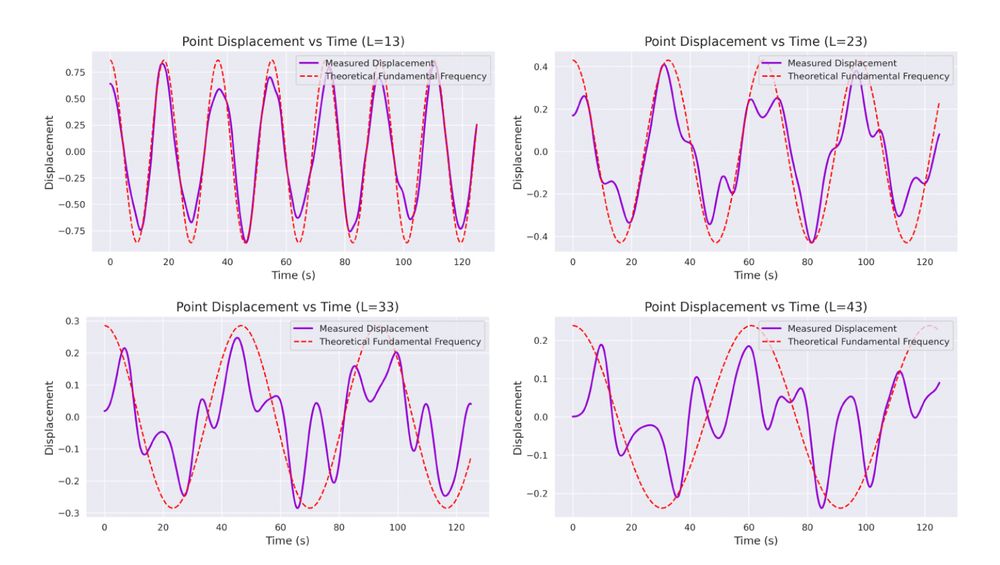11/13


11/13
Incredibly, on Multi-MNIST, wave-based models outperformed similarly sized U-Nets, despite having fewer parameters and only local connectivity.
10/13

Incredibly, on Multi-MNIST, wave-based models outperformed similarly sized U-Nets, despite having fewer parameters and only local connectivity.
10/13
8/13

8/13
7/13

7/13
We find that wave-based models produce unique dynamics for each shape, resulting in distinct Fourier spectra.
6/13

We find that wave-based models produce unique dynamics for each shape, resulting in distinct Fourier spectra.
6/13
This finding led us to wonder: can we actually learn (via trainable parameters) dynamics for more complex shapes?
5/13

This finding led us to wonder: can we actually learn (via trainable parameters) dynamics for more complex shapes?
5/13
We can see (with fixed RNNs that simulate drums) that different sized drumheads have different dynamics:
4/13


We can see (with fixed RNNs that simulate drums) that different sized drumheads have different dynamics:
4/13
3/13

3/13
Evidence suggests traveling waves could carry this information across space, allowing neurons to “know” what’s happening far away.
2/13

Evidence suggests traveling waves could carry this information across space, allowing neurons to “know” what’s happening far away.
2/13
I am thrilled to share our new work, "Traveling Waves Integrate Spatial Information Through Time" with @andykeller.bsky.social!
1/13
I am thrilled to share our new work, "Traveling Waves Integrate Spatial Information Through Time" with @andykeller.bsky.social!
1/13

